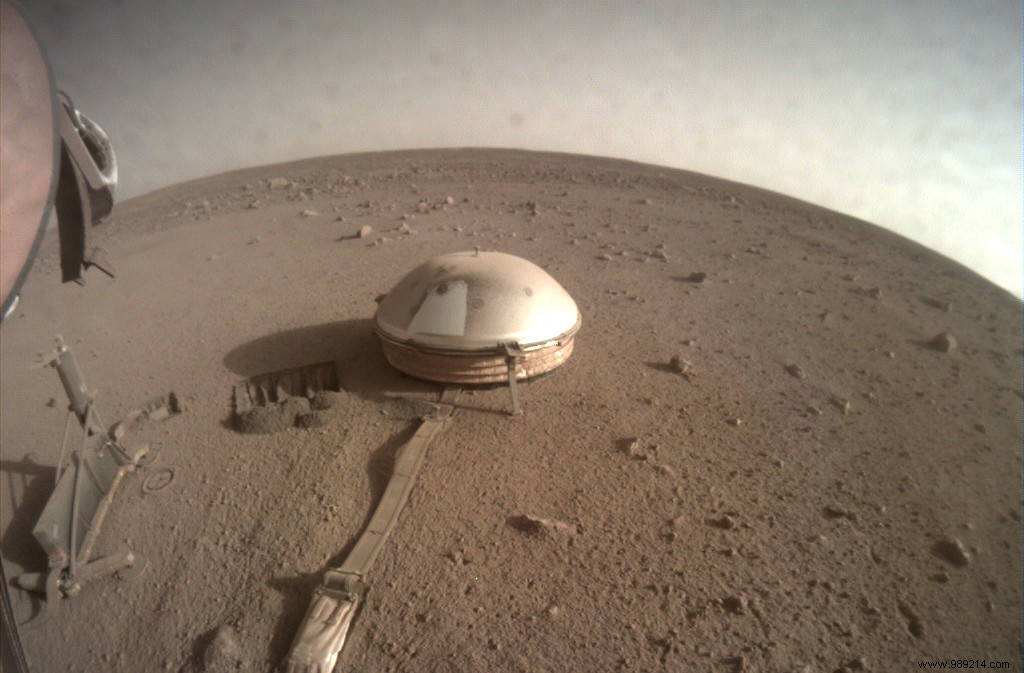Thanks to the InSight mission, NASA was able to determine the internal structure of Mars down to its core, highlighting several differences with our planet. This scientific breakthrough is reported in a trio of articles published in the journal Science .
The Earth's mantle was first seen in 1889, when seismic waves from an earthquake in Japan emerged in Germany. The liquid outer core of our planet was only discovered in 1914 and the solid inner core revealed in 1936. Similar measurements of the moon were made as part of the Apollo missions. Now we have similar measurements for Mars.
We owe this work to the InSight lander. Arriving on site in November 2018, the mission recorded several earthquakes. Most occurred at shallow depths, but some emanated from the bowels of the planet. The mission leaders, by evaluating the changes in speed and direction of these waves during their dispersion through the planet, were then able to draw up a first detailed map of its interior.
This work, which represents a major breakthrough in planetary seismology, will also be useful for studying other worlds by providing researchers with a different example of the Earth-Moon system. "If you're a doctor and you only practice on one patient, you're not going to be a very good doctor “, notes Mark Panning, planetary seismologist at NASA’s Jet Propulsion Laboratory.

These data confirmed that the Martian crust is thicker in the southern highlands and thinner in the northern lowlands, where ephemeral oceans may have once formed . On average, the planetary crust is between 24 and 72 km thick. This crust is also divided into three:an upper layer consisting mainly of volcanic rock "crumbled" by meteor impacts, an intermediate layer of denser volcanic rock, and a lower layer whose properties are not yet clearly established.
Like Earth's, Mars' mantle is much thicker than its crust. In contrast, the rigid part of the upper mantle, which is the base of tectonic plates on Earth, is about twice as thick on Mars. This could explain the absence of plate tectonics on our neighbor. Such rigidity may indeed have prevented the upper layers of Mars from fragmenting into individual plates.
Seismic waves reaching InSight also suggest that Mars' mantle is half as thick as Earth's. This lack of insulation would therefore have exacerbated the planet's heat loss during its tumultuous youth. This is why this coat is relatively cold today. However, on Earth, we know that volcanic activity is essentially fueled by the movement of internal heat up to the outer shell. Ultimately, the structure of this mantle could explain why Mars, once geologically very active, is now lethargic.
This thin coat could also explain, at least in part, the loss of the magnetic field of Mars during its youth. On Earth, the magnetic field is powered by iron-nickel currents flowing through its liquid outer core. Mars had a similar circulation, but the lack of heat eventually blocked the flow of these currents. Deprived of a protective shield, Mars finally lost its atmosphere, then its liquid water.

Finally, the data from InSight made it possible to estimate the size of the Martian core:about 3670 km. It is also "compressed" by the rest of the planet, suggesting that it is not very dense. As on Earth, it still contains a preponderance of iron and nickel, but must therefore also contain other light elements, such as oxygen, sulfur and hydrogen.
On the other hand, no earthquake recorded by Insight has yet been powerful enough to reach the true heart of the planet. Also, it is still unclear whether Mars, like Earth, has a solid inner core. Hoping that the mission, recently extended until December 2022, will allow us to answer this question.